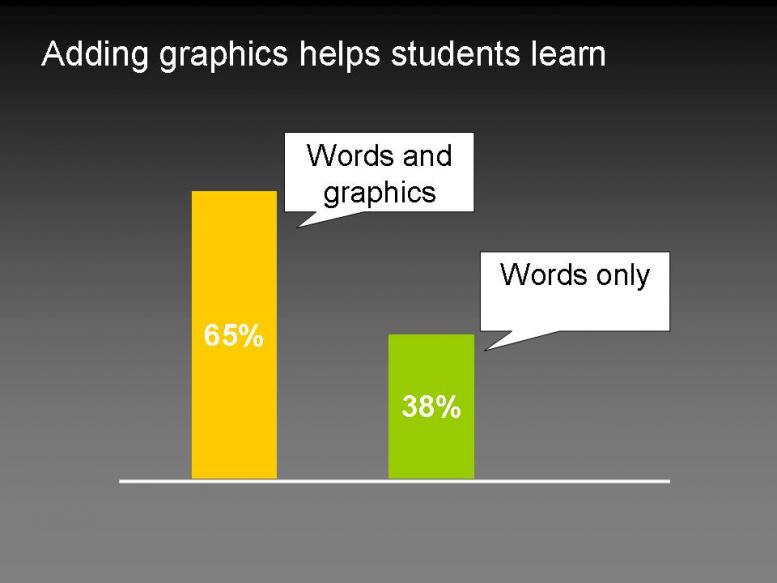Mayer’s Cognitive
Mayer’s Cognitive, which may also be referred to as the Cognitive Theory of Multimedia Learning, is
“a cognitive theory of multimedia learning based on three main assumptions: there are two separate channels (auditory and visual) for processing information; there is limited channel capacity; and that learning is an active process of filtering, selecting, organizing, and integrating information.”
The thought is, according to Richard Mayer, is that learners will respond better to the combination of multiple types of stimulation; for example verbal and visual. Mayer believes that is a person sees written instructions, hears verbal instructions, and sees corresponding images (visual instructions) to what they are reading and hearing, they are more likely to learn and retain knowledge.
Mayer’s “Multimedia Principle”
This makes Mayer’s ideas seem very simple, while in actuality, it is a great deal more complicated. Simply adding words to pictures does not guarantee learning will occur. Words and pictures, together or by themselves are not an effective way to achieve multimedia learning. The principle is derived from Mayer’s knowledge of the human mind and the way it functions. This knowledge, in combination with the words and pictures, is what makes this theory of Cognitive Theory of Multimedia Learning effective.
This theory proposes three main assumptions when it comes to learning with multimedia:
1. There are 2 separate channels (auditory and visual) for processing information (sometimes referred to as Dual-Coding theory)
2. Each channel has a limited (finite) capacity (similar to Sweller’s notion of Cognitive Load)
3. Learning is an active process of filtering, selecting, organizing, and integrating information based upon prior knowledge.
In addition to this, there are other elements that play a role in this theory. If is a fact that human beings can only take in and process a limited amount of information at a given time. Mayer also talks about the role of three memory stores:
1. 1. Sensory (which receives stimuli and stores it for a very short time)
2. 2. Working (where we actively process information to create mental constructs (or ‘schema’)
3. 3. Long-term (the repository of all things learned)
Mayer’s cognitive theory of multimedia learning presents the idea that the brain does not interpret a multimedia presentation of words, pictures, and auditory information in a mutually exclusive fashion; rather, these elements are selected and organized dynamically to produce logical mental constructs. Furthermore, Mayer underscores the importance of learning (based upon the testing of content and demonstrating the successful transfer of knowledge) when new information is integrated with prior knowledge.
Design principles including providing coherent verbal, pictorial information, guiding the learners to select relevant words and images, and reducing the load for a single processing channel etc. can be entailed from this theory.



